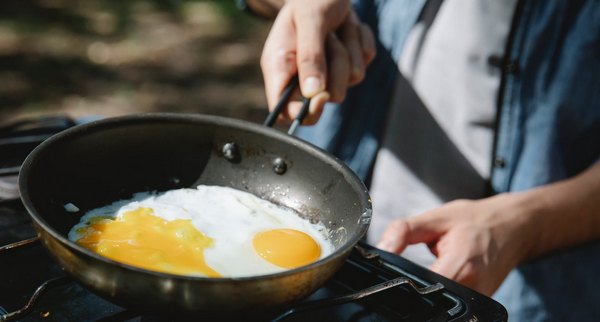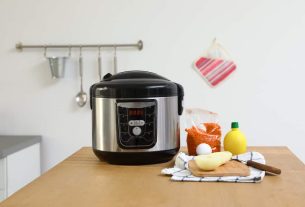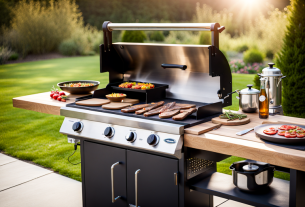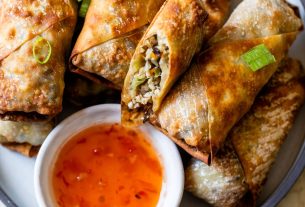Taking eggs for breakfast is pure bliss, the brilliant thing is that eggs can be eaten at any time in a day and eggs can be cooked in more than a hundred numerous ways. Because of the versatility associated with eggs, you are likely not to be easily tired of taking them. They are very healthy and many diet programs recommend them as part of meals for several reasons.
Fried eggs are a favorite of many, meanwhile, people are always curious about whether or not they can reheat fried eggs. There are always leftovers after taking your meal and you could even decide to make them in bulk so that you can eat them later. Fried eggs can be reheated but the problem is that they are likely not to be the same as when they were fresh. Using the microwave is the best method to reheat your fried eggs.
What we want to find out in this article is to see the details concerning fried eggs and how they can be reheated. We will also check out the expectations from the process of reheating as well as some tips to help you do it rightly. Keep reading to find out all you need to know.
Your Guide to Reheating Fried Eggs
It is an easy thing to store eggs but you may find it difficult to know if the outcome will be good when you reheat them. This is the same issue with fried eggs. They can turn out excellent when you reheat them but they can turn rubbery as well. This is why we have made this article to share the process and all the possible outcomes.
Using Eggs in the Kitchen
Talk of a very versatile dish, eggs are there to be reckoned with, they can be used in any type of baking and cooking. They can also be used as the main dish. Whether you are a chef or a baker, there are several things eggs can be used for. We want to find out some of the ways to use them, check below for some of the examples:
- Poached eggs
- Boiled eggs
- Omelet
- Scrambled eggs
- Fried eggs
- Breakfast casserole
- Quiche
- Frittata
The highlighted above are only some of the common ways you can use eggs. There are multiple options when you consider fried eggs. Check below for the options you have to fry eggs:
- Over hard
- Over easy
- Over medium
- Sunnyside up
There are several options you have at your disposal. The major difference is all about how finished you want the yolk to be, either the hard yolk or runny yolk. You will get your runniest yolk from Sunnyside up while a more solid yolk will be from over hard. Furthermore, you also have other options between them.
Making Fried Eggs
It is easy to cook fried eggs, it depends on your choices and preferences. The main problem with making your fried eggs will be about the yolk getting broken during the process of cooking. It could be sometimes difficult. If you, however, practice over time and use the proper techniques, you will know how to do it.
We will like to show you some instructions on how you can make your fried eggs so that you will know exactly what you want to work with when you are going through the process of reheating. The easiest fried eggs to keep or store and then reheat is the over hard variety because the yolk will not be lost during the process of storing and reheating as a result of being fully cooked before being stored.
Other types of fried eggs can also be stored and reheated, but you have to handle and monitor them carefully. The simple instructions you can use to make your over hard fried eggs are as follow:
- You need to have oil or butter, eggs, and non-stick spatula and frying pan.
- Heat the skillet under medium heat and heat the oil or butter in your frying pan.
- Get a bowl and crack the eggs individually inside it. Pour the eggs one after the other into the pan and ensure they are kept separate.
- Add pepper and salt to get the taste.
- Allow the eggs to cook without touching or stirring them. You will notice the egg white being set with the edges beginning to curl. You will have to wait for 3 to 4 minutes to get this done.
- Flip your egg gently and allow it to cook for another 3 to 4 minutes until you get the yolk fully and appropriately cooked.
- You can then flip it back and serve it.
The time spent on cooking will be reduced if you want to make over medium, over easy, or Sunnyside up. You should not flip Sunnyside eggs to finish them.
Storing your Fried Eggs
You have to ensure you properly store your fried eggs if you want to reheat them. It is easier for over hard fried eggs to be stored and reheated. If you want your reheating process to be simple, you need to properly store your fried eggs to maintain their integrity. You need to first store fried eggs if you will be reheating them. It is either you put them inside the fridge or freezer. There won’t be any significant difference irrespective of the way you choose to do it, the outcome will still be the same. Check below for the steps to use to store fried eggs:
- Package each of the eggs separately. They may all be added together after they have been wrapped separately. Wrap each of the fried eggs individually with plastic wrap or paper towels.
- Put them into an air-tight container or sealing bag.
- Refrigerate for about five days.
- Freeze for about four months.
Reheating your Fried Eggs
In case you have not tried it, fried eggs can be eaten cold instead of reheating them. They are excellent with their integrity still maintained without any risk. They can be easily made into an egg sandwich, perhaps, any other thing as well.
If you have frozen your fried eggs, you don’t need to be concerned about thawing time because the eggs will usually hold additional moisture. You are recommended to reheat your fried eggs directly from the refrigerator or the freezer.
Using a microwave is the most recommended method to use to reheat your fried eggs. However, if you will prefer to use a skillet, you are also allowed to use it. The major issue that may result when you reheat your fried eggs is getting them rubbery. If you are careful enough, this should not be a problem.
We cannot guarantee that the fried eggs will not be rubbery, it is just for you to keep this at the back of your mind. Follow the steps you can use to reheat your fried eggs below:
- Use paper towels to cover or wrap your fried egg so that the character and texture can be maintained.
- Put it on a microwavable dish.
- Allow it to microwave in intervals of 30 seconds. This stipulated time should be sufficient to reheat it but if you want your egg to be piping hot, reheat it for about 2 minutes.
To reheat fried eggs is simple and easy. Always remember to use a paper towel to wrap them. Every step is important to keep the egg’s natural moisture preserved. This will not allow the egg to become hard or rubbery through the process of reheating.

You might want to use a stovetop to reheat the fried eggs:
- Put a little bit of butter or oil inside your pan and heat it under medium heat.
- Proceed to add your fried egg and allow it to heat for up to 2 minutes.
- You don’t have to flip your egg, the ultimate goal is to warm it up to eat.
- Ensure you do not overcook because the flavor of the egg could be lost in the process.
Related Questions
Can You Meal Prep with Fried Eggs?
For the purpose of meal prep, fried eggs can work well with it. A lot of experts believe keeping in your eggs runny slightly so that the yolk can be used to add character and flavor to your meal.
How Are Eggs Healthy?
Generally, eggs are very healthy. You should not over-eat eggs due to the high possible content of cholesterol. They are very low in carbohydrates and calories but have high protein content. Eggs help increase metabolism by making you feel full. Do not eat eggs as part of every of your meal most especially if you’re easily prone to heart disease and high cholesterol. Aside from that, when you take eggs, they help you to reduce hunger munches and cravings if you want something that will help you reduce your weight.
Do You Reheat Scrambled Eggs the Same as Fried Eggs?
You can reheat almost every type of egg meals with the instructions we have provided in this article. You need to be careful that the eggs could be retaining excess moisture. Ensure you use paper towels to wrap the eggs to preserve their character inside the microwave.


